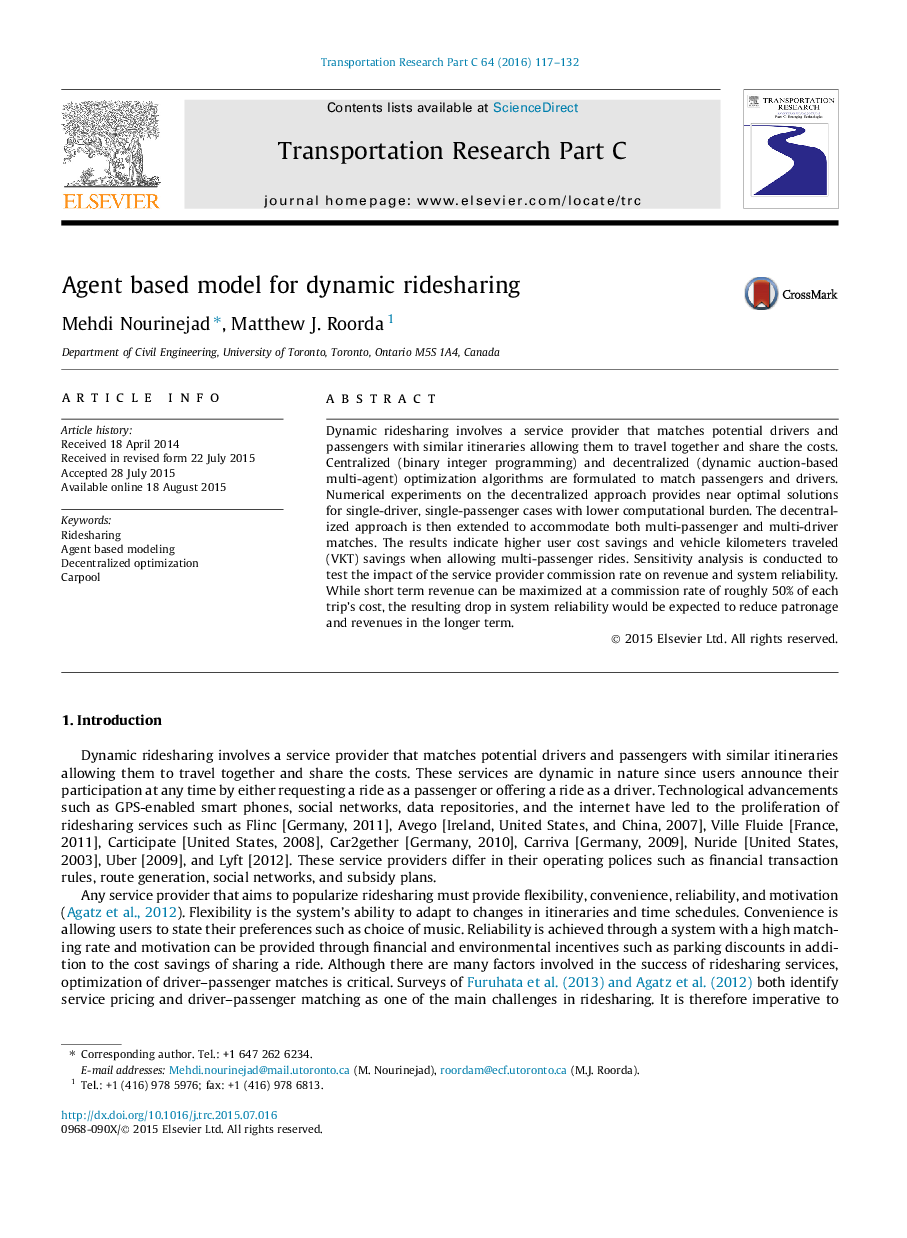| Article ID | Journal | Published Year | Pages | File Type |
|---|---|---|---|---|
| 526276 | Transportation Research Part C: Emerging Technologies | 2016 | 16 Pages |
•A new agent based model is proposed for the dynamic ridesharing problem.•A vicinity approach creates potential matching choice sets for drivers and passengers.•The agent based model gives close to optimal results within short computation times.•Higher user cost savings and VKT savings are achieved through multi-passenger rides.•Short term revenue is maximized by a commission rate of roughly 50%.
Dynamic ridesharing involves a service provider that matches potential drivers and passengers with similar itineraries allowing them to travel together and share the costs. Centralized (binary integer programming) and decentralized (dynamic auction-based multi-agent) optimization algorithms are formulated to match passengers and drivers. Numerical experiments on the decentralized approach provides near optimal solutions for single-driver, single-passenger cases with lower computational burden. The decentralized approach is then extended to accommodate both multi-passenger and multi-driver matches. The results indicate higher user cost savings and vehicle kilometers traveled (VKT) savings when allowing multi-passenger rides. Sensitivity analysis is conducted to test the impact of the service provider commission rate on revenue and system reliability. While short term revenue can be maximized at a commission rate of roughly 50% of each trip’s cost, the resulting drop in system reliability would be expected to reduce patronage and revenues in the longer term.
